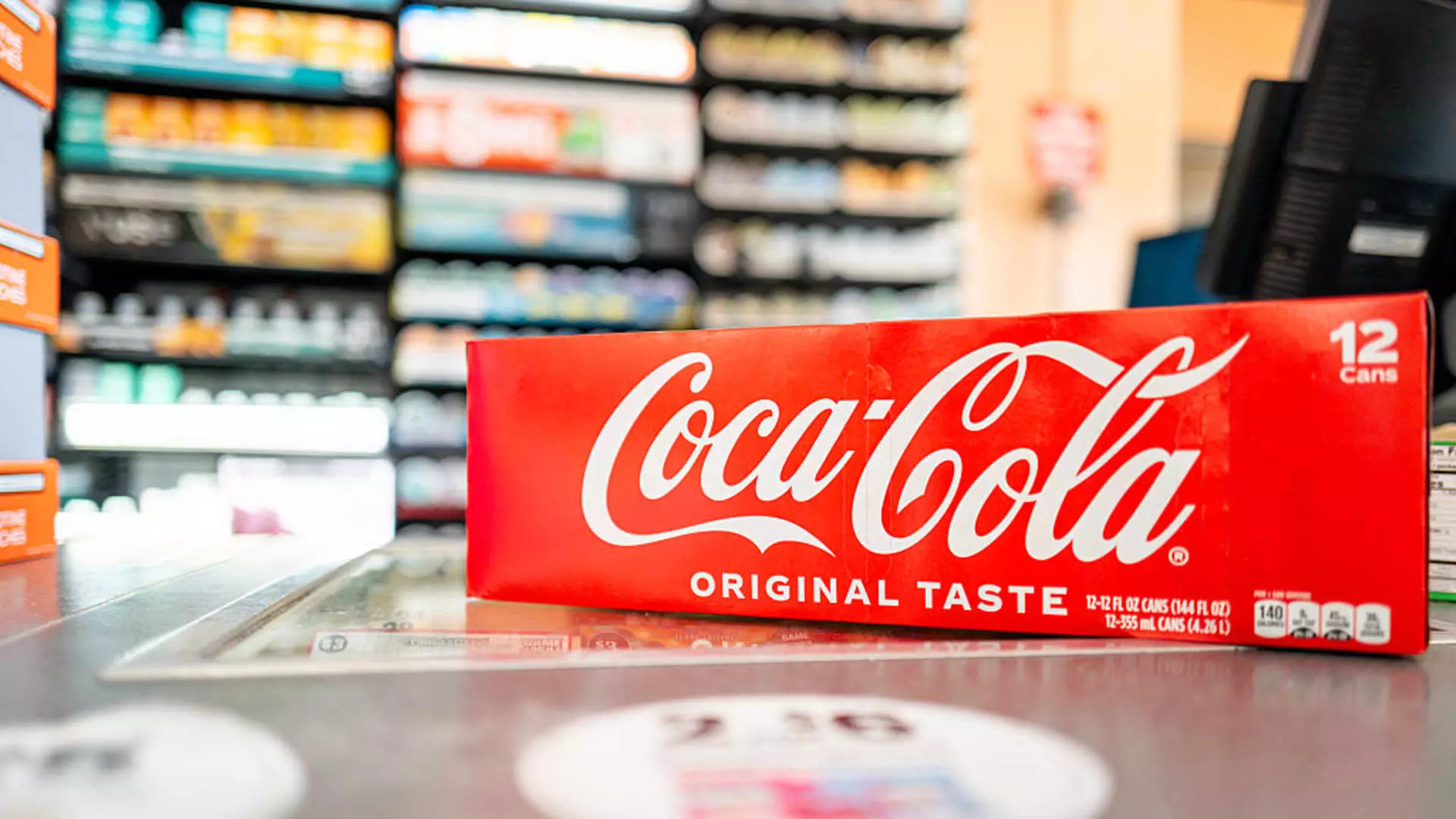Coca-Cola has once again showcased a form of corporate resilience that might deceive the casual observer. While key metrics beat Wall Street expectations—an impressive feat in itself—the undercurrents tell a more troubling story. The company’s reported earnings and revenue growth are notable, yet beneath these figures lies a fragile foundation of global consumer confidence that is wavering. This duality—the outward success against the backdrop of internal weaknesses—raises uncomfortable questions about the true health of the world’s most iconic beverage empire.
Weakening Demand in Core Markets: A Sign of Struggling Consumer Confidence
The most striking aspect of Coca-Cola’s recent report is the decline in global unit case volume by 1%, with particular declines in Latin America (-2%) and Asia-Pacific (-3%). These are regions where market saturation is high and growth traditionally has been strong. The fact that even these segments are contracting suggests that the consumer’s willingness to spend on discretionary items like soda is waning. It is an indication that, despite corporate reassuring statements, economic uncertainty and geopolitical instability are eroding consumer purchasing power and confidence at a fundamental level.
In North America, a critical market, volume dropped 1%, even as executive remarks suggested products are “resilient.” But resilience is only a veneer; beneath it lies a pattern of declining demand, especially among lower-income consumers targeted with affordability programs. The social media attack targeting Hispanic communities, though officially denied, undoubtedly left some impact, revealing how fragile brand perception remains in politically and socially tense climates. These are signs of a consumer environment that is less robust than Coke’s glossy quarterly statements suggest.
Mixed Signals from Different Regions and Segments
Analysts and investors might focus on the 5% organic revenue increase—an impressive feat on paper. But this figure omits the reality that targeted pricing strategies are artificially inflating numbers at the expense of volume growth. The slight uptick in Europe and the EMEA region (+3%) masks the struggles elsewhere. Meanwhile, key segments—like juices and plant-based drinks—declined 4%. Even segments that traditionally perform well, like water and tea, showed stagnation.
This uneven picture underscores an industry that is struggling to adapt to shifting consumer preferences and economic pressures. Coke’s decision to introduce a cane sugar formula in the U.S. indicates a recognition that traditional sugar-sweetened beverages might be losing favor, but it also highlights that diversification efforts are being driven more by necessity than innovation.
Corporate Narrative vs. Market Reality
CEO James Quincey’s optimistic tone about “improving volumes” in some markets belies an underlying fragility. The notion that the plans “are working” glosses over the fact that key markets remain under intense pressure. The slight rebound in some regions may be encouraging, but it does little to hide the overall trend—decline in core markets with only occasional blips of growth.
Furthermore, the company plans to “narrow” its earnings outlook for the year, signaling an awareness of the turbulence ahead. While they maintain a forecast of 5%-6% organic revenue growth for 2025, it seems increasingly wishful given the current economic climate. If consumer confidence continues to erode, the projected growth could prove elusive.
A Need for Genuine Reinvention, Not Just Reported Success
What Coca-Cola’s current strategy demonstrates is a company that is desperately trying to cling onto old paradigms—price hikes, diversification, and regional tweaking—rather than reinventing itself for a more uncertain future. The fundamental challenge is not just declining volumes but shifting consumer values. Younger generations are increasingly skeptical of processed foods and sugary drinks, prioritizing health and authenticity. Coca-Cola’s continued reliance on traditional soda models risks obsolescence unless it confronts these changes head-on.
Corporate narratives tend to portray a story of triumph and steady growth. But the reality is more complex, a reflection of broader economic, social, and political upheavals that threaten to undermine even the most dominant brands. Coca-Cola’s recent results serve as a stark reminder that in a rapidly changing world, resilience can sometimes be an illusion. Behind the polished reports and optimistic forecasts loom the unsettling truth—our consumer economy is more fragile than it appears, and monumental shifts are on the horizon.


Leave a Reply